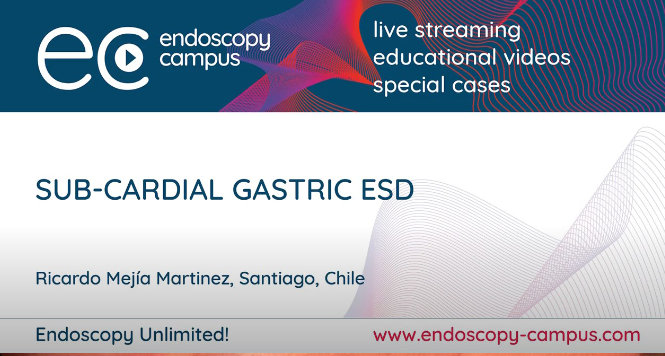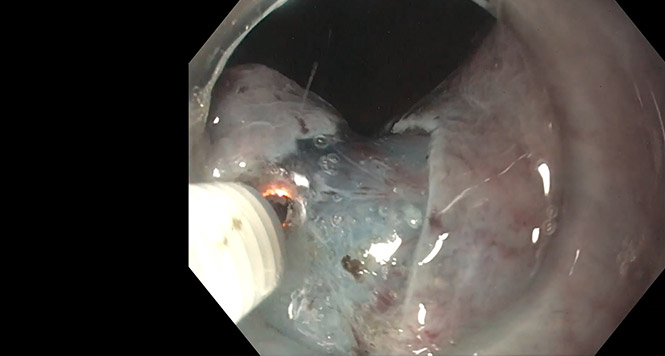Salvage Endoscopic Submucosal Dissection After Chemoradiation for Locally Advanced Rectal Cancer
Douglas K. Rex, MD, MASGE, reviewing Galen L, et al. Gastrointest Endosc 2022 Feb 17.
Patients with locally advanced rectal cancer who undergo neoadjuvant chemoradiation sometimes have remarkable responses to treatment. These may include evidence of no residual disease or minimal residual disease confined to the mucosa or submucosa.
In this study, an expert with more than 1000 previously completed cases of endoscopic submucosal dissection (ESD) reported the results of all rectal ESDs performed from July 2018 to August 2020. Patients eligible for salvage ESD after neoadjuvant chemoradiation had no residual fixed or tethered mass, no palpable ulceration or mucosal irregularity, evidence of only a soft polyp seen on an endoscopic examination, no evidence of invasive disease on rectal magnetic resonance imaging (no extension beyond the submucosa and no suspicious lymph nodes), and no evidence of metastatic disease on computed tomographic imaging.
Residual mucosal disease was Japan NBI Expert Team (JNET) classification type 1, 2a, or 2b.
There were 39 cases of rectal ESD, of which 12 were salvage cases. Most of the 12 cases subjected to salvage ESD were T3 prior to chemoradiation (n=10).
Nonsalvage rectal ESDs were, on average, larger and more likely to have JNET 2b features. All 12 salvage ESD cases were scarred down, compared with one-third of the standard ESD group. Procedure times were similar between standard and salvage ESD. En bloc resection rates were 93% and 92% in the standard and salvage groups, and R0 rates were 67% and 75%, respectively. Similarly, adverse events were 7.4% and 0% in the standard and salvage groups, respectively. Two of the 12 salvage patients needed local surgery after ESD for positive margins, and 9 of the salvage group had only hyperplastic or adenomatous polyps on histology.

COMMENTThese results suggest that, for a select group of patients who have received neoadjuvant chemoradiation for locally advanced rectal cancer, salvage ESD enables effective staging to determine the need for surgical resection and, in some cases, is itself curative. Substantial ESD expertise is needed to deal with the consistent presence of fibrosis during salvage ESD.
Note to readers: At the time we reviewed this paper, its publisher noted that it was not in final form and that subsequent changes might be made.
CITATION(S)
Galen L, Makoto N, Neha H, et al. Technical feasibility of salvage endoscopic submucosal dissection after chemoradiation for locally advanced rectal adenocarcinoma. Gastrointest Endosc 2022 Feb 17. (Epub ahead of print) (https://doi.org/10.1016/j.gie.2022.02.014)


